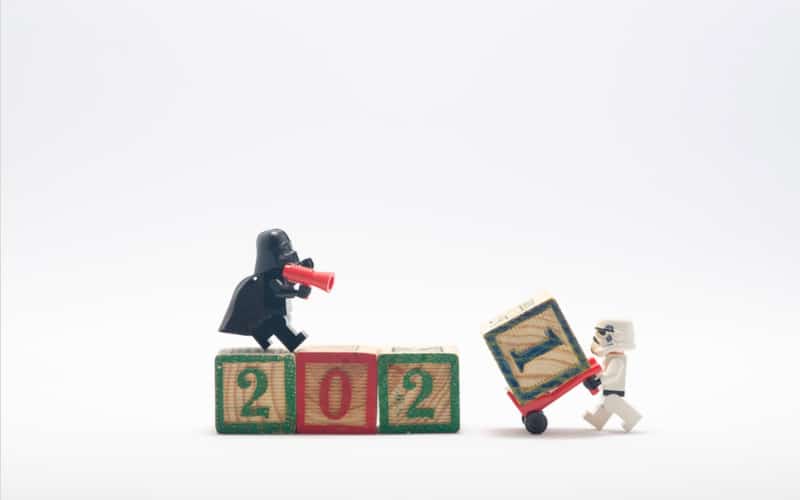Throughout the movies, shows, and other Star Wars media, we see evidence of the passage of time. Characters that were young in some movies are much older in others, and events that were once common knowledge are relegated to the realm of myths and legends over time.
With this in mind, you may be wondering: How does time work in Star Wars? How is it measured?
Time is measured according to the Galactic Standard Calendar, which is based upon solar cycles and rotations of the planet Coruscant. Following this standard, time in Star Wars works much as it does on Earth, with some exceptions.
Contents
How Does Time Work in Star Wars?

In Star Wars, time is officially measured in a similar way to what we are used to in the real world. That said, there are also unofficial ways of measuring time as well as discrepancies in what is considered “standard.”
Regardless of the system being used, time is generally measured in seconds, minutes, days, weeks, months, years, decades, centuries, and millennia. Time is tracked using calendars and chronometers, or clocks.
Star Wars Standard Calendar Systems
At the time of the Prequel trilogy, the Galactic Republic had been in power for about 1,000 years. Everything that came before the rise of the Republic was considered a dark age and basically forgotten.
When the Republic rose to power, official calendars were reset to zero, and going forward, time was measured in relation to this event. Time was kept using the Galactic Standard Calendar.
Time was based off of the orbital cycles of Coruscant, the Republic’s capital planet. According to this article from Wookieepedia, a year on Coruscant was made up of 365 days and did not have leap years.
However, a different Wookieepedia article states that a year on Coruscant was composed of 368 days.
Regardless of the length of a Standard Year, a Standard Day was considered to be 24 hours and was based on the rotational periods of Coruscant. Each hour was composed of 60 minutes and each minute was further broken down into 60 seconds.
When the Galactic Empire supplanted the Republic, it began using its own dating system to measure standardized time. The Imperial Calendar was implemented. Events were denoted as BFE and AFE, “Before” and “After the Formation of the Empire,” respectively.
It is unclear exactly how time was measured using this calendar, but it seems likely that units and measurements didn’t change much from the Galactic Standard Calendar, as Coruscant remained the capital planet.
What is BBY and ABY in Star Wars?
After the fall of the Empire, the Galactic Standard Calendar was reinstated, and the time of the Battle of Yavin was selected as the new “zero year”.
Using this new standard of time measurement, years were referred to as either BBY or ABY. For example, the Empire replaced the Republic in 19 BBY, while the Rebels defeated the Empire at the Battle of Endor in 4 ABY.
But what do these designations stand for?
BBY simply means “Before the Battle of Yavin”, while ABY means “After the Battle of Yavin”. So, anything that happened before this crucial battle was designated “BBY”, and anything that happened after was designated “ABY”.
Other Calendars in Star Wars
Though the Galactic Standard and Imperial Calendars were considered the official methods of time-keeping in the galaxy, some planets and systems had their own calendars.
One example of this is the planet Lothal. This planet divided its years into seasons (spring, summer, autumn, and winter) and denoted each date with “LY”, or “Lothal Year”.
It’s unclear how long a Lothal Year was in relation to the official standards of the galaxy. We do know that the Empire’s rise, which happened in BBY, took place in 3258 LY according to the Lothal Calendar.
Back on Coruscant, another less standardized calendar was used by the police force. Years were denoted by the abbreviation “CRC”, though it is unknown what these letters stood for. According to this calendar, the Battle of Yavin took place in 7977 CRC.
Star Wars Month and Day Names
Months were not given names according to the Galactic Standard or Imperial Calendars. Though there were 10 months in each standard year, these months were simply referred to by their number.
That said, each month was divided into 7 weeks, and each week was further divided into 5 days–in other words, there were 35 days per month. The days of each week were named: Primeday, Centaxday, Taungsday, Zhellday, and Benduday.
The remaining days of the year were dedicated as day-long holidays and week-long festivals. The festivals were called New Year Fete Week, the Festival of Life, and the Festival of Stars. The holidays varied from planet to planet.
What are the Star Wars Time Periods?
As mentioned, periods of time in Star Wars are similar to our own and range from seconds to millenia. Specific time periods tied together by historical events are known as ages and eras.
These eras are as follows:
- The Old Republic Era: began 25,000 BBY
- Middle Era of the Old Republic: unknown dates
- Fall of the Old Republic: unknown dates
- The Republic Era: began after 1032 BBY
- Fall of the Republic: began 32 BBY
- Imperial Era: began 19 BBY
- New Republic Era: began 5 ABY
Conclusion
Standardized time in Star Wars is based off of the orbital and rotational cycles of the capital planet Coruscant. These cycles are very similar to what we are used to on Earth, and units of measurement such as the minute, hour, day, week, month, and year are used to show the passage of time.
Following the Battle of Yavin, standardized time was measured in relation to this key battle. Some planets, including Lothal, have their own calendars to measure the passage of time.
The events of Star Wars are grouped into time periods known as ages or eras. These eras span anywhere from a few years to several millennia.

Sarah Hood is a freelance content writer and editor with a love for all things Star Wars. When she’s not writing, she enjoys cooking, singing, and spending time in the great outdoors.
